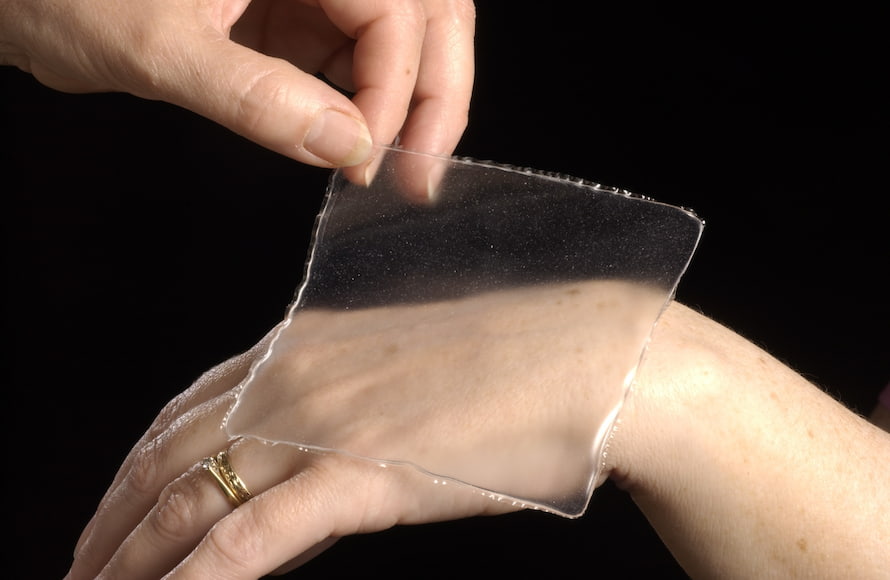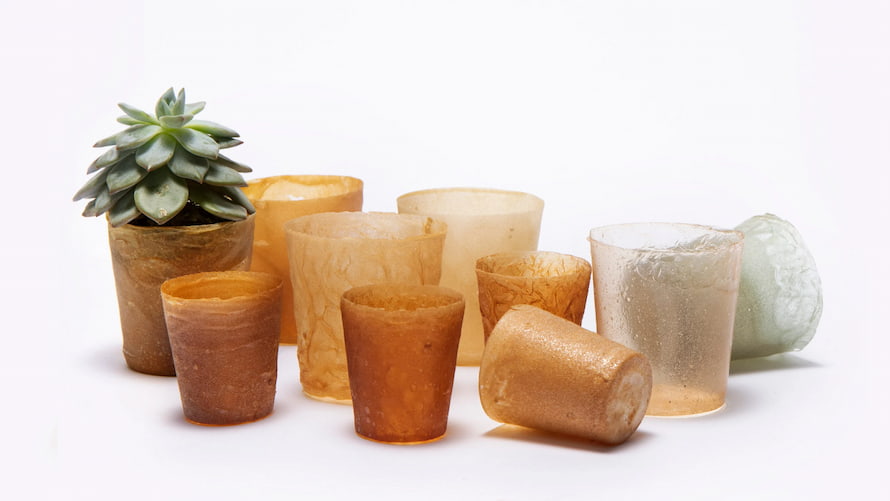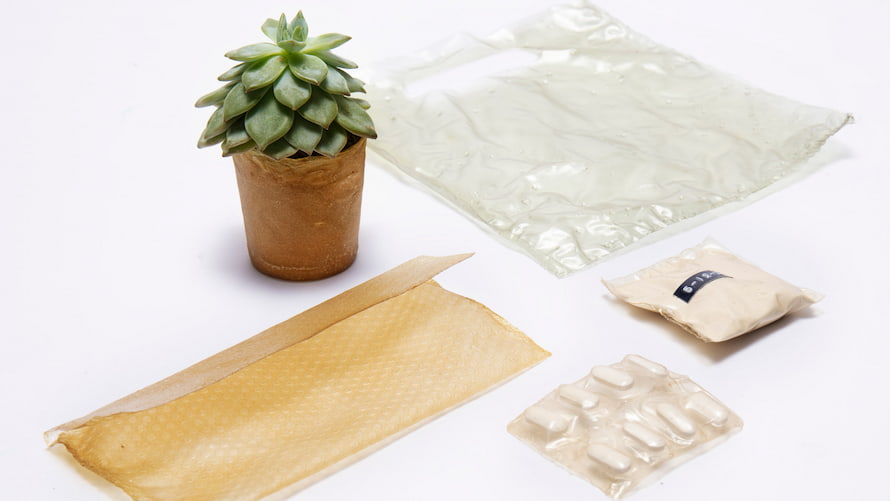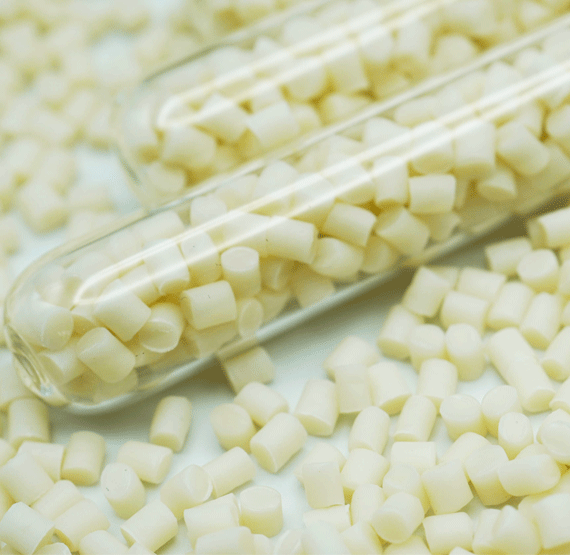.jpg)
Potato starch-based bioplastics have emerged as a promising alternative to traditional petroleum-based plastics. Not only are they biodegradable and compostable, but they can also be produced from renewable resources and may have lower carbon footprints than their fossil fuel-based counterparts. However, like any material, potato starch bioplastics come with their own set of pros and cons, and understanding these tradeoffs is crucial for making informed decisions about their use. In this article, we will delve into the top-secret potato starch bioplastic pros and cons, and explore some surprising insights of these innovative materials.
1. Bioplastic made from potato starch?
1.1. What is potato starch bioplastic?

Bioplastic made from potato starch is a type of biodegradable plastic that is derived from natural materials, such as potato starch, and other renewable resources. The process of making bioplastic from potato starch typically involves extracting the starch from the potatoes and then combining it with other natural ingredients, such as glycerol, to create a material that can be molded and shaped into various forms.
The resulting bioplastic has several advantages over traditional plastic, as it is biodegradable, meaning it can be broken down naturally by microorganisms in the environment, and it does not release harmful chemicals or microplastics into the ecosystem. Additionally, bioplastics made from potato starch have a lower carbon footprint and require less energy to produce than traditional plastics.
Read more: What are bioplastics made from? Materials to make bioplastics
1.2. Who invented potato starch bioplastic?
Pontus Törnqvist, a young Swedish student, studied potato starch among other kinds of starch. He has a product that is vying for the renowned James Dyson prize.
"I was interested in discovering solutions for the post-use life of throwaway plastic materials," the student himself explains. The disparity between the amount of time individuals spend using plastic things (20 minutes) and how long they survive in the environment (450 years!) served as the starting point.
Pontus Törnqvist used a "trial and error" approach because he adhered to the traditional scientific procedure. "At first, I believed that my research with biodegradable thermoplastic might somehow include algae. But when I heated the algae, all I got was something like an algal cookie. A tiny amount of the liquid that I used to combine the algae and potato starch dropped to the floor. It created a type of film as it dried. I thus devoted all of my energies to doing this.
Potato Plastic was created in this manner. From straws to cutlery, this biodegradable material may be utilized to create any item that is typically made of throwaway plastic. After being used for two months, it will then be composted.
1.3. Potato starch bioplastic applications

Potato starch-based bioplastics have a variety of applications in different industries. Some of the most common applications of bioplastics made from potato starch include:
- Packaging: One of the most common applications of bioplastics made from potato starch is in packaging. Bioplastics can be used to create a wide range of packaging materials, including films, wraps, bags, and containers.
- Foodservice items: Another common application of potato starch-based bioplastics is in the production of food service items. These can include plates, cups, utensils, and other disposable items used in restaurants and catering businesses. Bioplastics made from potato starch are a suitable alternative to traditional plastics and paper products.
- Agriculture: Bioplastics made from potato starch can also be used in agriculture, where they can be used to create mulch films. These films can be placed over the soil, where they help to reduce soil erosion and promote crop growth.
- Textiles: Bioplastics made from potato starch can be used in textile production. The starch is extracted from potatoes and converted into fibers, which can be woven into textile products. These fibers can be used to create clothing, upholstery, and other textile products.
- Medical devices: Bioplastics made from potato starch can also be used in medical device manufacturing. They are a suitable alternative to traditional plastics in the production of surgical instruments and implants.
- 3D printing: Bioplastics made from potato starch can be used in 3D printing to create a variety of objects, from prototypes to consumer products.
Overall, the applications of potato starch-based bioplastics are still growing and expanding as new technologies and methods are developed for creating and using these materials. While they are not yet as widely used as traditional plastics, they offer a promising alternative for reducing the environmental impact of plastic production and disposal.
2. Potato starch bioplastic pros and cons

2.1. Pros
Potato starch bioplastics have several advantages over traditional petroleum-based plastics, including:
Biodegradability
Potato starch bioplastics are biodegradable, meaning they can be broken down by microorganisms in the environment, including bacteria, fungi, and algae. This is in contrast to traditional petroleum-based plastics that can persist in the environment for hundreds of years. The biodegradability of potato starch bioplastics means that they have the potential to reduce the amount of plastic waste in the environment and prevent harm to wildlife.
Renewable resource
Potatoes, the raw material used to create potato starch bioplastics, are a renewable resource that can be grown and harvested each year. This is in contrast to petroleum-based plastics, which are derived from non-renewable fossil fuels. The use of renewable resources reduces the dependence on finite resources and helps to promote a more sustainable economy.
Lower carbon footprint
Potato starch bioplastics have a lower carbon footprint compared to traditional plastics. The production of traditional plastics requires the extraction of fossil fuels, which releases greenhouse gasses and contributes to climate change. In contrast, the production of potato starch bioplastics requires less energy and emits fewer greenhouse gasses. This means that potato starch bioplastics have the potential to help mitigate climate change.
Versatility
Potato starch bioplastics can be used in a variety of applications, including packaging, food service items, agriculture, textiles, medical devices, and 3D printing. This versatility makes them a useful alternative to traditional plastics in many different industries. Additionally, the properties of potato starch bioplastics can be customized to meet the specific needs of each application.
Biocompatibility
Potato starch bioplastics are biocompatible, meaning they do not cause harm to live tissue. This makes them a suitable alternative to traditional plastics in medical device manufacturing, including surgical instruments and implants. Additionally, potato starch bioplastics can be used in other applications where contact with living tissue is required, such as wound dressings and bandages.
Consumer appeal
With an increasing awareness of environmental issues, consumers are becoming more interested in products that have a reduced environmental impact. Potato starch bioplastics offer an eco-friendly alternative to traditional plastics, making them an attractive option for environmentally-conscious consumers.
The use of potato starch bioplastics has the potential to reduce the environmental impact of plastic production and disposal. They are biodegradable, made from renewable resources, have a lower carbon footprint, are versatile, biocompatible, and have consumer appeal. As the demand for sustainable materials continues to increase, potato starch bioplastics are likely to become more widely used in a variety of applications.
2.2. Cons
While potato starch bioplastics have many advantages over traditional petroleum-based plastics, they also have some disadvantages that are worth considering, including:
Cost
The production of potato starch bioplastics can be more expensive than traditional petroleum-based plastics. This is because the raw materials used in bioplastics are more expensive, and the production process is often more complex. The cost of potato starch bioplastics can make them less competitive with traditional plastics in some applications, particularly in industries where costs are a major factor.
Limited durability
While potato starch bioplastics are biodegradable, they are not as durable as traditional plastics. This means that they may not be suitable for applications that require long-term use or exposure to extreme temperatures or other harsh conditions. For example, some food packaging materials may need to be able to withstand freezing temperatures or high heat, which could cause potato starch bioplastics to degrade or lose their shape.
Production challenges
The production of potato starch bioplastics can be challenging, particularly for small manufacturers who may not have access to specialized equipment and expertise. The production process can also be sensitive to fluctuations in temperature and humidity, which can impact the quality and consistency of the final product. Additionally, the process of creating potato starch bioplastics requires a significant amount of water, which can be a challenge in areas with limited water resources.
Competing uses for raw materials
The raw materials used to create potato starch bioplastics can also be used for food production. This can create competition for these resources, which can impact the availability and cost of the raw materials used in bioplastic production. Additionally, the production of potato starch bioplastics can potentially divert resources away from food production, which could create issues in areas where food security is a concern.
Limited recycling options
While potato starch bioplastics are biodegradable, they may not be suitable for recycling in the same way as traditional plastics. This is because the biodegradable additives used in potato starch bioplastics can contaminate the recycling stream, making it difficult to recycle these materials in the same way as traditional plastics. This can limit the options for disposing of potato starch bioplastics at the end of their life cycle.
Biodegradation time
While biodegradability is one of the advantages of potato starch bioplastics, it can also be a disadvantage. Depending on the environmental conditions, potato starch bioplastics can take several months or even years to biodegrade. During this time, they can still create litter and potentially cause harm to wildlife. Additionally, the process of biodegradation can release methane, a potent greenhouse gas, which can contribute to climate change.
While potato starch bioplastics have many advantages over traditional plastics, they also have some limitations that can make them less suitable for certain applications. As technology and manufacturing processes improve, some of these limitations may be overcome, making potato starch bioplastics a more viable alternative to traditional plastics.
3. How to make bioplastic from potato starch?
.jpg)
In this tutorial, we'll show you how to create plastic from potato starch and other household ingredients to turn it into a resin. You may just use cornstarch in place of potato starch if you don't want to the time making it. Below is the detailed potato starch bioplastic recipe:
Step 1: Prepare the materials
The first step is to gather all of the necessary materials. These typically include potato starch, water, glycerol, and vinegar. You should ensure that all materials are of high quality and free from contaminants, as impurities can impact the properties of the final bioplastic.
Step 2: Extract the Starch
After preparing the materials, the next step will be extracting the starch.
- 1) Obtain and wash a potato.
- 2) To completely remove the skin, use a peeler.
- 3) Cut the baked potato into size-appropriate pieces for your blender.
- 4) Fill the blender with the cubes and around 1 cup of water. Run the machine on high for one or two minutes.
- 5) To remove the hazy water, use a coffee filter.
- 6) Dry the mixture is not strictly essential if you want to make the plastic immediately. But if you need to store it for a long time, spread it out on wax paper and place it in a bright location to dry (it could get moldy otherwise).
You may purchase pre-made, higher-quality starch online or at your neighborhood grocery shop if you don't want to manufacture the starch yourself.
Step 3: Mix the potato starch and water
In a saucepan, mix together the potato starch and water until the potato starch is fully dissolved. The ratio of potato starch to water can vary depending on the desired properties of the final bioplastic, but a typical ratio is around 1:10 (i.e. 1 part potato starch to 10 parts water).
- 1) Fill the beaker or other container with 60 ml (4 teaspoons) of cold water before heating the mixture.
- 2) Add 10 grams (or roughly 1 tablespoon) of potato or corn starch - either homemade or purchased - to the water.
- 3) Add the food coloring at this point if colorful plastic is required. Five drips should be plenty.
Step 4: Heat the mixture
Reduce the heat to low and whisk the mixture often. Increase the heat to medium-high and whisk even more as the mixture begins to thicken. Keep cooking it when it begins to boil for 5 minutes. You now should have a "gooey" product that you can pour into a mold or onto a piece of aluminum foil/silicone heat pad to dry. You want it to be extremely transparent and sticky (but not like toothpaste, think flubber). Heating the mixture helps to activate the potato starch and create a uniform, homogeneous solution.
Step 5: Add glycerol and vinegar
Once the mixture has thickened, remove it from the heat and stir in the glycerol and vinegar. Glycerol is a plasticizer that helps to give bioplastic flexibility and elasticity, while vinegar acts as a preservative and helps to prevent the growth of bacteria and fungi. The exact amount of glycerol and vinegar used can vary depending on the desired properties of the bioplastic, but a typical ratio is around 2-3 parts glycerol and 1 part vinegar per 100 parts of potato starch.
Step 6: Pour the mixture into a mold
Once the mixture is fully mixed, it is poured into a mold or onto a flat surface and allowed to cool and harden. The mold can be made of a variety of materials, such as silicone or plastic, and can be designed to create a specific shape or size of bioplastic. The temperature and humidity of the environment can impact the cooling and hardening process, and it may take several hours or even days for the bioplastic to be fully set.
Step 7: Remove the bioplastic from the mold
Once the bioplastic has hardened, it can be removed from the mold and used in a variety of applications. The bioplastic may need to be trimmed or cut to the desired size or shape, and any rough edges or imperfections can be sanded or smoothed out. The final properties of the bioplastic will depend on the specific recipe and manufacturing process used, as well as any additional additives or treatments that may be applied.
In short, making bioplastic from potato starch requires careful attention to detail and specialized equipment and expertise. The recipe and manufacturing process can be adjusted to achieve specific properties, such as flexibility, strength, or biodegradability, and the resulting bioplastic can be used in a variety of applications, such as packaging, food service products, and even medical devices. As demand for sustainable materials grows, more research and development will likely be devoted to improving the production and properties of bioplastics made from potato starch and other renewable resources.
BiONext 400 is a bioplastic compound made from bioplastic and modified starch powder, offering an eco-friendly alternative to traditional plastics. This bioplastic is made from starch, which makes it biodegradable within 12 months after use, eliminating any concerns over waste management and disposal.

BiONext 400 is a bio-compound based on bioplastic and modified starch powder
BiONext 400 is a versatile material that offers full functionality in one compound. It can be directly processed without the need for additional materials, making it a convenient option for manufacturers looking to produce sustainable products. It is an efficient and eco-friendly option for various applications, such as single-use cutlery, disposable food packaging, and more.
If you want to know more information about BiONext 400 or other kinds of bioplastic products, please do not hesitate to contact us.